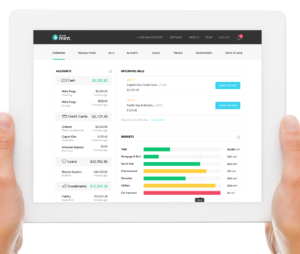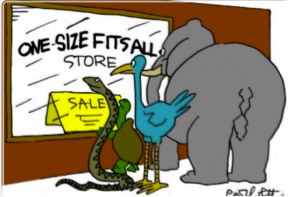A fat tax refund is just another way to say you paid too much taxes!

Chappaqua Financial Planner Scott Kahan talks tax planning and financial planning
A fat tax refund is just another way to say you paid too much taxes! Did you just get a fat tax refund or a big bill? Either way it could be a sign of poor financial planning says Chappaqua’s Scott Kahan CFP®. We asked him to give us his best tips on tax planning and financial planning. Here’s what he sent us…
A fat tax refund is just another way to say you paid too much taxes!
 With the April 15 deadline to file tax returns upon us some filers will have to dig into their pockets to pay Uncle Sam. Others, who will be getting a tax return will celebrate their good fortune. But a fat tax refund can be a sign of poor financial planning and may mean that you have missed some opportunities to fully fund your financial goals.
With the April 15 deadline to file tax returns upon us some filers will have to dig into their pockets to pay Uncle Sam. Others, who will be getting a tax return will celebrate their good fortune. But a fat tax refund can be a sign of poor financial planning and may mean that you have missed some opportunities to fully fund your financial goals.
Getting a big refund really means you paid too much taxes. Some people count on these refunds to pay for a vacation or to pay down debt. But when people over-withhold they are giving the government an interest free loan. Wouldn’t you be better off getting the money each week and putting it into a vacation savings account? Even with low interest rates, at least you’re getting something.
For many people a tax liability or a refund, can come as a surprise. This was an unusual year due to the changes in the new tax law, that included a doubling of the standard deduction, elimination of personal deductions, increased child tax credits, and the cap on SALT taxes. Anyone surprised by their tax returns in 2018 needs to sit down and do an evaluation to avoid it happening again in 2019.
Plan for Zero
If you have an accountant, ask her for a projection and to help you determine if you should change your tax withholding. Then review the changes after several pay checks to make sure you are on track. Adjust again if you have to.

We tell our clients to set your tax planning as close to zero as possible where you would expect neither to owe taxes or to receive a tax return. This simple step in tax planning is important because without it you can’t begin to develop a financial plan.
Make a new plan, Stan
Once you know what your taxes should be you can determine what you have left to save. Next you need to determine what you need to save to reach your goals. This is the most common step people miss because of the difficulty in allocating for inflation. But it’s a critical step because financial planning is all about trying to reconcile any differences that may exist between how much you have to save and how much you need to save.
And there are almost always differences because most people are not equipped to save as much as they will need to fully fund all of their dreams for retirement, college and housing. Sometimes you have to adjust your goals. You may need to work longer. If adjusting your goals doesn’t get you where you need to be then it’s time to look at your budget.
If you can’t save enough…
 To help with the budgeting process, I recommend Mint Budget Tracker & Planner from Intuit software to my clients. It will download your bank and credit card information and put it into spending categories. From there you can build a budget. Unfortunately, after you have developed a budget you will have to try to live within it. But, I find it’s a lot easier for my clients to cut expenses once they understand how much savings they will need for college. Or better yet, how staying on budget may mean they can have that boat in retirement, after all.
To help with the budgeting process, I recommend Mint Budget Tracker & Planner from Intuit software to my clients. It will download your bank and credit card information and put it into spending categories. From there you can build a budget. Unfortunately, after you have developed a budget you will have to try to live within it. But, I find it’s a lot easier for my clients to cut expenses once they understand how much savings they will need for college. Or better yet, how staying on budget may mean they can have that boat in retirement, after all.
With all this spade work done, you can begin to look for a better way to handle that tax refund throughout the year. Now you can look at how your tax-deductible retirement accounts work and consider how to fund other tax advantaged plans.
How much 401K is enough?
The first rule of thumb, if your company offers a 401K matching fund, is to at least fund up to the limits they will match. Often companies will match fifty percent of that. All your investments should have such a good 12-month return. If you are not planning on staying with the company through your vesting period, this may not be an issue. But, as you may remain at your current company longer than you think it’s a good place to start.
If you are already saving the match limit on your company 401K and you just received a $10,000 refund you should consider adding to your contributions. Remember, if you are in the 25%  tax bracket that $10,000 that you just lent the government tax free can finance additional contributions of $12,500. That’s another pretty good return you just got for yourself and a sobering example of the benefits you sacrifice by over-with-holding.
tax bracket that $10,000 that you just lent the government tax free can finance additional contributions of $12,500. That’s another pretty good return you just got for yourself and a sobering example of the benefits you sacrifice by over-with-holding.
Traditional IRAs vs. Roth IRAs
Be careful with one size fits all decisions when it comes to savings and tax planning. Depending on your tax situation you may want to consider saving in a Roth IRA. While your Roth IRA contributions are made after tax, your withdrawals are tax free. If you expect to be in a higher tax bracket when you retire you may want to contribute to a Roth IRA. Roth IRA candidates are often young or filers who are subject to a lower tax bracket in any given year. If you may inherit money or are expecting to be covered by a pension you may be a Roth candidate. I have had clients who split their contributions, in some years, between a traditional and a Roth IRA.
A final difference between Roth and traditional IRAs is that there are no minimum required distributions with Roth IRAs. With traditional IRAs, you are required to start withdrawing money at age 70 ½. This could have undesirable tax implications for some people and affect financial, tax or estate planning decisions.
Other Tax-Advantaged Savings Options
 As the saying goes, you can borrow for college, but you can’t borrow for your retirement. However, most people realize the importance of setting aside savings for college. Contributions to the New York 529 College Savings Program (NY’s 529) are state tax deductible up to $5,000 a year for a single parent, $10,000 if you are married. Your investments grow tax-free and withdrawals are also tax-free as long as they are used for “qualified” college expenses. It’s the best way to save for college.
As the saying goes, you can borrow for college, but you can’t borrow for your retirement. However, most people realize the importance of setting aside savings for college. Contributions to the New York 529 College Savings Program (NY’s 529) are state tax deductible up to $5,000 a year for a single parent, $10,000 if you are married. Your investments grow tax-free and withdrawals are also tax-free as long as they are used for “qualified” college expenses. It’s the best way to save for college.
If you are older, expect high annual medical expenses or are still awash with cash after funding your other savings  needs then a Health Savings Account (HSA) offers unparalleled tax advantages. HSA contributions are tax deductible, grow tax free and can be withdrawn tax free if they are used for qualified medical expenses. You will need to have a high deductible health insurance plan ($1,350 for individual coverage or $2,700 for family coverage) to contribute to an HSA. The contribution limits are $3,500 for an individual or $7,000 for a family. If you are 55 or older you can contribute an additional $1,000.
needs then a Health Savings Account (HSA) offers unparalleled tax advantages. HSA contributions are tax deductible, grow tax free and can be withdrawn tax free if they are used for qualified medical expenses. You will need to have a high deductible health insurance plan ($1,350 for individual coverage or $2,700 for family coverage) to contribute to an HSA. The contribution limits are $3,500 for an individual or $7,000 for a family. If you are 55 or older you can contribute an additional $1,000.
Whether you had a tax refund or liability this year, tax season is always a great time to refine your tax planning for next year. It’s also a good time to talk with a financial planner to make sure you are on track to reach your savings goals.
Financial Asset Management Corporation has provided fee-only financial planning and wealth management services for individuals and small businesses in the Tri-State area since 1986. They serve 150 clients and manage over 200 million dollars in assets. FAM Corp. President Scott Kahan is a Certified Financial Planner professional. (Financial Asset Management Corp., 26 South Greeley Avenue, Chappaqua, NY, (914) 238-8900; www.famcorporation.com)

















